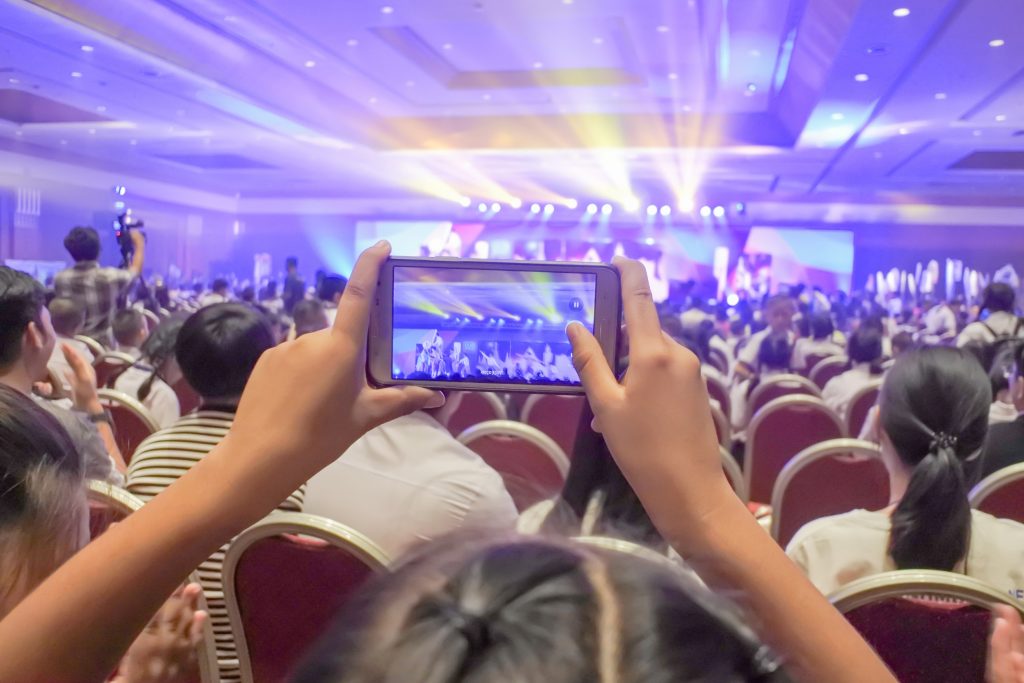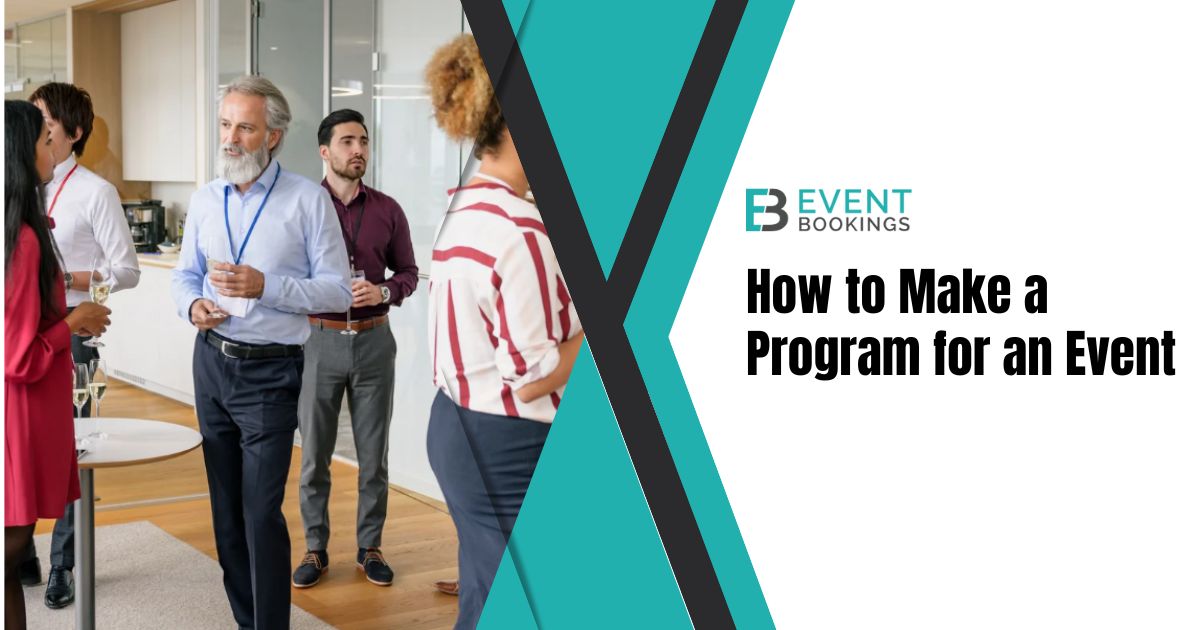Creating an event program is both an art and a science. Whether you’re organizing a corporate seminar, or planning a community festival, a well-crafted event program is the foundation of your event’s success. It provides attendees with a clear roadmap of what to expect, keeps the event running smoothly, and enhances the overall experience for everyone involved. Suppose you have some upcoming events and still need to learn how to make a program for an Event. In that case, this article explains the process, offering you a comprehensive approach to designing an event program that meets and exceeds expectations.
This comprehensive guide will equip you with everything you need to create an exceptional event program, from understanding its purpose to incorporating must-have elements and design considerations. Whether you’re an experienced event planner looking for fresh ideas or a beginner excited to learn the ropes, this guide is your go-to resource. Join us as we journey to master creating an event program that leaves a lasting impression.
What’s a program for an event?
An event programme is a document that includes a thorough schedule of events and all the details related to them. It typically includes the schedule of events, adlibs, speaker notes, insider knowledge about the events, the company’s history, and other information the event organizers want guests to know. Event programmes assist participants in managing their time effectively by giving them a clear idea of what to expect throughout the event. In addition, they could be employed to advertise the occasion and give information to prospective partners or sponsors.
Simple printed schedules, intricate booklets, or imaginative digital experiences incorporating papers, movies, images, or event videos are just a few of the different forms that event programmes might take.
Why Do You Need an Event Program?
Consider going to a conference without a schedule. You would need to be aware of the sessions’ schedule, start times, and speakers, which would be confusing and annoying.

A programme fulfils a number of vital purposes:
Clarity and Organization: It clearly shows the speakers, themes, timetable, venue layout, and overall workings of the event outline. This allows participants to engage in programmes that suit their interests and efficiently manage their time.
Improved Experience: A programme is more than just a list of events. Incorporating speaker biographies, session descriptions, and even maps can enhance participants’ overall experience.
Enhanced Participation: A well-crafted programme can stimulate participants’ interest and motivate them to participate more actively in workshops, social events, and other programme features.
Marketing and Branding: Your programme carries over the identity of your event. It outward manifests the general concept, attitude, and expertise.
Key Elements of an Event Program

To create an effective event program, you must include several key elements. These components ensure that your program is comprehensive, informative, and engaging.
1. Cover Page
The cover page is the first thing attendees will see, so it should be visually appealing and reflect the event’s theme. Name, date, and location of the event should be included, along with a visually striking design that complements the rest of the program.
2. Event Schedule
The event schedule is the heart of the program. It should include:
- Date and Time: Clearly list each activity’s date and start times.
- Activity Description: Provide a brief description of each activity or session.
- Locations: Indicate where each activity will take place.
- Speakers or Performers: Include any speakers or performers’ names and brief bios.
3. Speaker Bios
Highlighting the speakers or performers adds credibility to your event and helps attendees connect with them. Include professional photos, brief biographies, and any notable achievements or contributions.
Read More: How to write a powerful speaker bio for a conference
4. Maps and Directions
Providing maps and directions is especially important for larger events or unfamiliar venues. Include an event space layout, parking information, and other logistical details to help attendees navigate the venue.
5. Sponsors and Partners
Acknowledge and thank your sponsors and partners. This not only shows appreciation but also highlights their support, which can be beneficial for future collaborations.
6. Additional Information
Include any other relevant information, such as:
- Contact Information: Provide contact details for event organizers in case attendees have questions or need assistance.
- Social Media Handles: Give attendees the appropriate hashtags and usernames to promote the event on social media.
- FAQs: Address common questions to help attendees feel more prepared and informed.
How to Make a Program for an Event in 6 Easy Steps
1. Planning and Goal Setting
Before you design your program, taking a step back and considering your event’s goals is crucial.
What’s the Main Event?
Every event has a purpose: to educate attendees on a new topic, entertain them with inspiring talks, or provide networking opportunities to build connections. Identifying this core objective will guide the content and structure of your program. Having a clear idea of what type of event an agent has conducted can help you design the program more relatively. If we consider the example of events, an educational conference might feature lectures and workshops, while a networking event might focus on icebreaker activities and social gatherings.
Who’s on the Guest List?
Knowing your target audience is like having a roadmap to attendee engagement. Consider demographics like age, profession, and interests. Are you expecting tech enthusiasts, seasoned professionals, or a mix of both? Tailoring the program content and presentation style to resonate with your audience will ensure they get the most out of the event.
Short and Sweet or Spread Out?
The format of your event, whether a one-day workshop or a multi-day conference, will influence the program’s length and level of detail. A shorter event might have a more concise program focusing on key highlights, while a longer event can delve deeper with detailed session descriptions and speaker bios.
2. Building the Framework
Now that you have a clear vision for your event let’s get down to the nitty-gritty! Here are the essential building blocks of a stellar program:
- Event Essentials: This is the groundwork, introducing the event with its name, date, time, and location (including address). Don’t forget to include the name of your organization or the event organizer for reference.
- Warm Welcome: Set a welcoming tone for your event with a brief message. You can use this space to reiterate the event’s purpose and thank attendees for joining. This is also a great opportunity to introduce the organizers and any key sponsors involved in making the event possible.
- The Big Picture: This is where your program truly comes alive! The schedule of events provides a chronological roadmap of the entire event. List all the activities in order, including session titles, speaker names, and start and end times. Indicate where each session will be held if your event is held in a large facility with several rooms to prevent misunderstanding.
- Meet the Experts: Give your attendees a chance to meet the speakers beforehand virtually! Include short bios for each speaker, highlighting their names, titles, affiliations, and a brief overview of their expertise relevant to the event theme.
- What to Expect: Intrigue your attendees with session descriptions! Provide a concise overview of each session, highlighting the key topics covered, the key takeaways attendees can expect to gain, and the format (e.g., lecture, panel discussion, workshop).
Bonus Elements:
While the above elements form the core of your program, consider including these additional sections for a well-rounded experience:
- Fuel Up Breaks: Indicate timings for scheduled food and beverage breaks to allow attendees to grab refreshments and network with each other.
- Important Announcements: Use this section for any last-minute updates or important information attendees need.
- A Big Thank You: Recognize your sponsors and partners for contributing to the event’s success.
- Stay Connected: Provide contact details for event organizers or a designated information booth in case attendees have questions throughout the day.
3. Designing for Impact
A visually appealing program can grab attendees’ attention and excite them to participate. Here are some design tips to create a program that’s both informative and engaging:
- Make it Loud and Clear: Use clear and concise language throughout your program. Avoid technical jargon and opt for easy-to-understand words. Structure your information with clear headings, subheadings, and bullet points to make it easy for attendees to scan and find what they want.
- Visually Appealing Voyage: Don’t underestimate the power of design! Go for a clean and professional layout that’s easy on the eyes. Choose a pleasing colour scheme that reflects the event’s theme or your organization’s branding. Select fonts that are clear and large enough to read comfortably, even from a distance.
- Branding Jackpot: Your program extends your event’s brand. Use your event’s colors, logo, and other branding components to create a unified aesthetic that captures the essence of the occasion. This consistency will help attendees connect the program with the overall experience.
4. Choosing the Right Format (Print vs. Digital)
In today’s digital world, you might wonder if a printed program is still relevant. The answer is it depends! Both print and digital programs have their own advantages and disadvantages:
Printed Programs:
Pros: Printed programs are tangible keepsakes that attendees can refer back to after the event. They can also be used to jot down notes during networking sessions.
Cons: Printing programs can be costly, especially for large events. They also limit your ability to make updates if any changes occur after printing.
Digital Programs:
Pros: Digital programs are conveniently accessible on laptops, tablets, and smartphones and are also environmentally friendly.Additionally, they can be instantly changed to reflect any last-minute modifications.
Cons: Not everyone has access to a device or reliable internet connection, potentially excluding some attendees. Digital programs can also be distracting, with notifications and emails competing for attention.
Ultimately, the best format for your program depends on your specific event, budget, and target audience. Think about providing both choices to accommodate varying tastes.
5. Utilizing the Right Tool
Now that you have design knowledge let’s explore the tools that can help you bring your program to life!
- Template Time Savers: Renowned online platforms offer program templates you can customize with your event details and branding. These are a great option for those who want a quick and easy solution.
- Event Management Software: If you’re using an all-in-one event management platform, it might have a built-in program creation tool. This can be a convenient option as it allows you to create your program within the platform you use for other event management tasks.
6. Giving the Final Touches
Thorough proofreading is essential to ensure that there are no typos, grammatical errors, or missing information. Double-check everything from dates and times to speaker names and session titles. Having a friend or colleague review your program with fresh eyes can also help catch any mistakes you might have missed. Then, Distribute it in the right way.
Printed Programs: Printed programs can be distributed at registration desks for attendees to pick up upon arrival. If you have a large attendee list, consider pre-mailing the programs to save time on-site.
Digital Programs: For a digital program, include download links in your event confirmation emails and post them on your event website. You can also utilize QR codes on signage or printed materials at the event venue, allowing attendees to scan the code and download the program directly to their devices.
Last Words
Creating a carefully planned programme is an investment in your event’s success. Following the steps we have discussed, answering the question of how to make a program for an event will be easy for you. Recall that a well-designed programme is more than simply an activity list; it’s a road map that directs your guests, optimizes their involvement, and creates a favourable image that lasts. Thus, invest time developing, designing, and distributing a top-notch programme; it will benefit your event’s overall performance!




